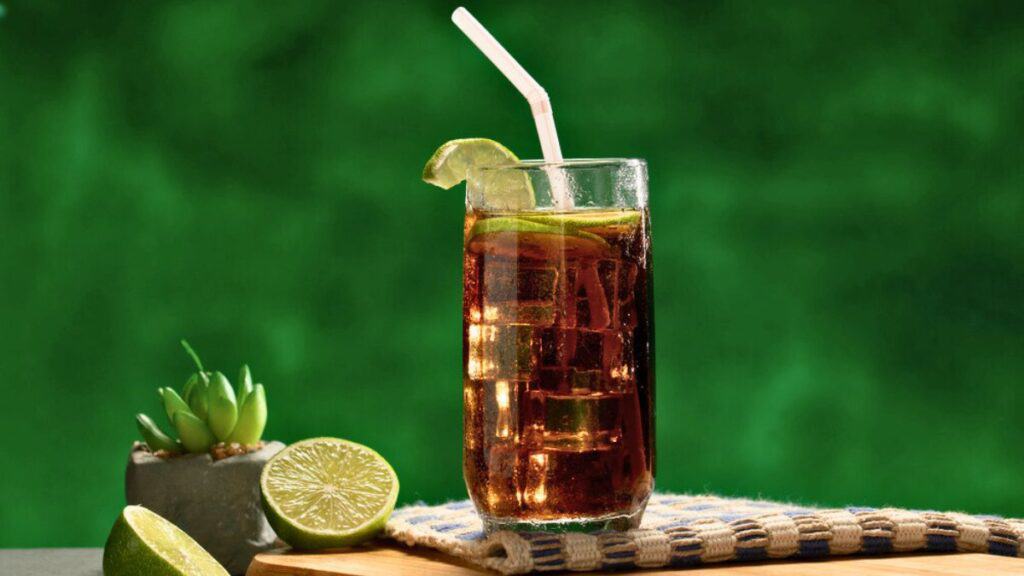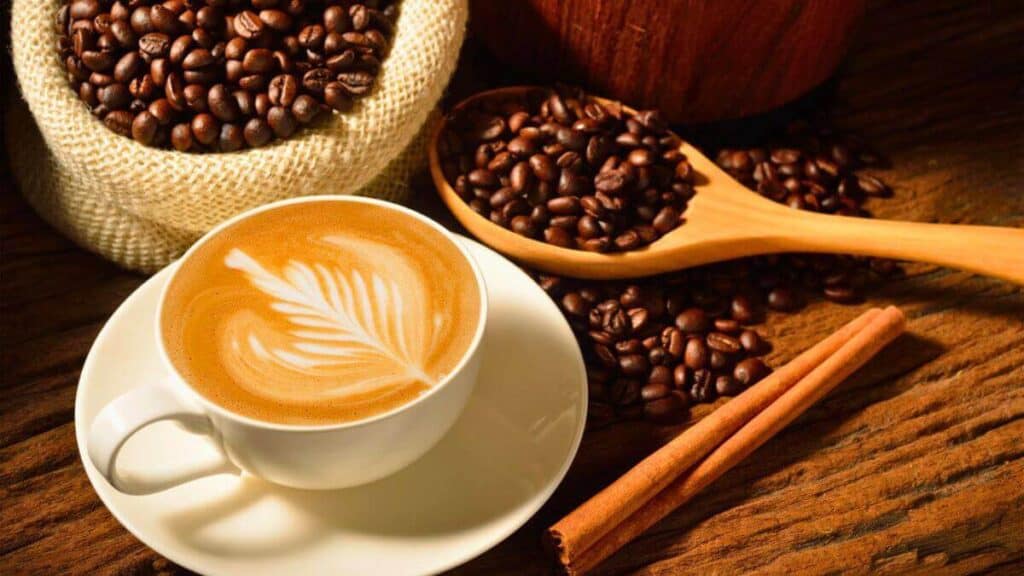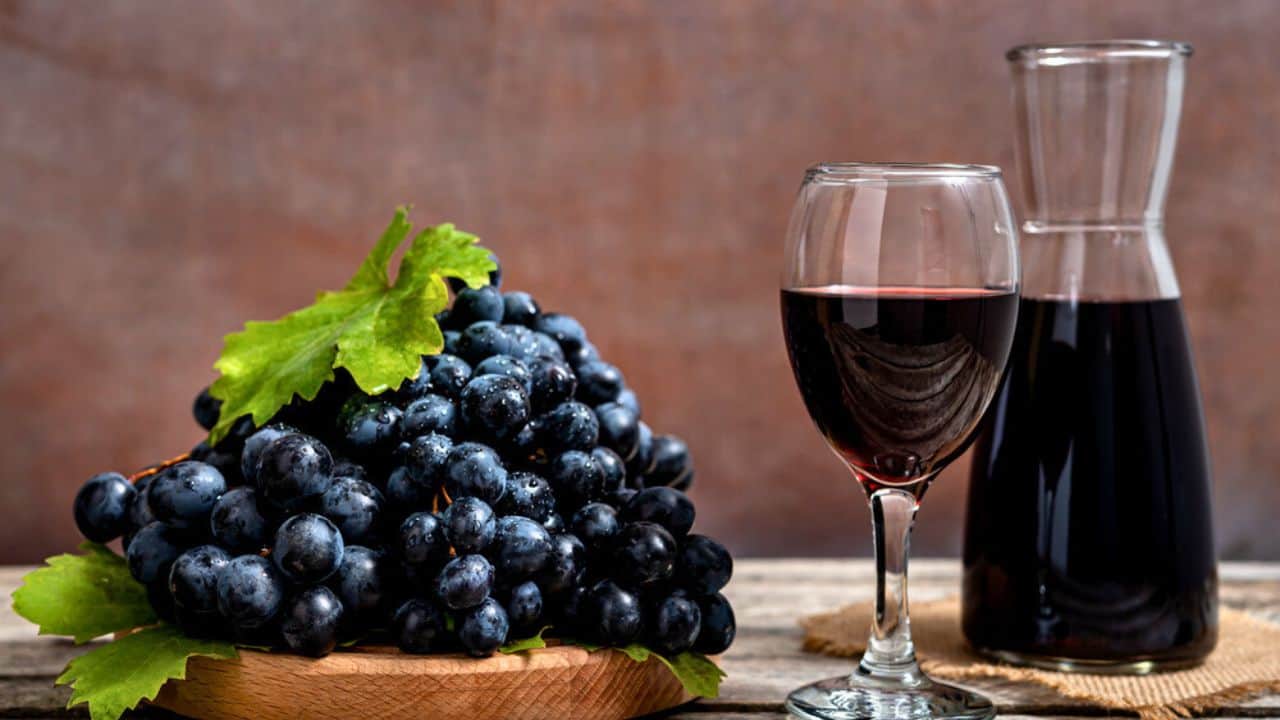Discover the vibrant flavors of Argentina through its popular drinks. From the kick of yerba mate to the rich indulgence of malbec wine, Argentina offers a diverse range of beverages that reflect its cultural richness. Let’s explore the most popular drinks in Argentina.
In Argentina, gathering for a drink is a ritual of friendship and relaxation. Argentinians often pair their drinks with copetín, a selection of small snacks similar to tapas, including cheese, olives, nuts, or cold cuts.
When you sit down for a drink in Argentina, you’ll notice the emphasis on freshness and local flavors. Herbs and fruits are not just garnishes but integral ingredients in Argentinian cocktails and beverages. The drinks often showcase the country’s bountiful produce, from the grapes that make world-renowned wines to fresh, local herbs.
Top Beverages in Argentina – Cocktails
Argentina offers various cocktail recipes with unique flavors and cultural influences.
1. Fernet Con Coca (Fernet and Coke)

Fernet Con Coca is an iconic Argentinian cocktail combining fernet, a bitter, aromatic spirit, and sweet Coca-Cola.
- Taste: Fernet Con Coca offers a unique balance of bitterness from the fernet and sweetness from the cola.
- History: The cocktail gained popularity in the mid-20th century and remains a staple in Argentina
- Variants: Some prefer a higher ratio of fernet for a more robust flavor.
- Preparation: Typically mixed in a tall glass with ice.
2. Fernandito
Fernandito is a twist on the classic fernet and Coca-Cola by adding a splash of lime for a citrusy kick.
- Taste: The lime juice adds a refreshing, tangy contrast to the sweet and bitter flavors.
- History: It emerged as a popular summer drink during the 1950s.
- Variants: Some versions include a dash of soda for extra fizz.
- Preparation: Mixed in a glass with ice, topped with lime juice.
3. South American Cocktail Clericó
South American Cocktail Clercol is a fruit-laden drink similar to sangria.
- Taste: It’s a refreshing blend of wine and chopped fruits.
- History: Clericó has roots in Spanish sangria, adapted to South American tastes.
- Variants: White wine or red wine bases offer different flavor profiles.
- Preparation: Fruits soak in wine, often served chilled in a pitcher.
4. Beso de Frambuesa
Beso de Frambuesa is a raspberry-infused cocktail favorite among Argentinian cocktails. It’s made from raspberry puree, syrup, agar, white rum, lime juice, and shaved ice.
- Taste: The cocktail offers a sweet, fruity, slightly tart flavor.
- History: Gained popularity for its vibrant color and refreshing taste.
- Variants: Sometimes mixed with sparkling wine for a fizzy twist.
- Preparation: Muddled raspberries with vodka and a touch of sugar
5. Tincho
Tincho is a simple, refreshing cocktail named after its creator. It’s made from sparkling water and white wine, and various combinations of fruit juices, such as watermelon, lime, cranberry, and orange, can be added.
- Taste: Light and fruity, with a slight effervescence.
- History: Named after an Argentinian winemaker, it quickly became a nationwide favorite.
- Variants: Primarily made with white wine, specifically Torrontés.
- Preparation: Served over ice, often with a slice of lime.
6. Dia de Campo
Dia de Campo is a cocktail that captures the essence of the Argentinian countryside. The ingredients include fernet, lemon juice, syrup, ginger beer, ice cubes, and a lemon twist for garnish.
- Taste: Earthy and robust, often featuring local herbs.
- History: Inspired by rural Argentinian flavors and landscapes.
- Variants: These may include different herbal infusions.
- Preparation: Mixed with local spirits and fresh ingredients.
7. Buenos Aires Zombie
The Buenos Aires Zombie cocktail recipe incorporates white rum, gold rum, triple sec, amaro, lemon juice, passion fruit, mint, and crushed ice. Additional elements include ice cubes and tools like a tiki mug and strainer.
- Taste: Strong and tropical, mixed with rum and fruit juices.
- History: Adapted from the traditional Zombie cocktail with a distinct Argentinian twist by adding liquor or apricot brandy.
- Variants: Varies based on the type of rum used.
- Preparation: Best enjoyed slowly, given its strength.
8. Ananá Fizz
Ananá fizz is a refreshing cocktail made with pineapple and sparkling ingredients such as lemon juice, sugar or syrup, sparkling water or soda, ice, and alcohol (optional). It’s perfect for those warm Argentine days.
- Taste: Crisp and fruity, with a pleasant fizz.
- History: It’s a modern creation, blending traditional flavors with contemporary mixology.
- Variants: Made with local fruits and spirits.
- Preparation: Mixed with sparkling water, fruit juice, and local spirits, it’s a light and bubbly drink.
9. Caña Legui Liquor (Spirit)
Caña Legui is an integral part of the Argentinian cocktails scene. It’s a unique spirit that brings a local twist to many drinks.
- Taste: Sweet with a hint of sugarcane and herbs.
- History: Originated as a homemade liquor, now widely produced and consumed.
- Variants: Mainly consumed in its traditional form.
- Preparation: Often enjoyed neat or mixed-in cocktails for a sweet and herby flavor.
Best Drinks in Argentina – Coffee
10. Cortado
Cortado is a popular espresso with a small amount of warm milk. After I drank it in Argentina, I noticed it was also becoming popular worldwide.
- Taste: Strong coffee flavor with creaminess from the milk.
- History: Originated in Spain’s Basque region century and was closely linked to espresso. It reached the rest of the world by the end of the 20th century.
- Variants: Some prefer more or less milk.
- Preparation: Espresso shot topped with warm milk.
11. Café Con Leche

Café con leche is a breakfast staple. It means coffee with milk, and you can get it anywhere in Argentina. I recommend you try it if you enjoy milk in your coffee like I do.
- Taste: A balanced mix of bold coffee and smooth milk.
- History: Deeply rooted in Argentinian breakfast culture.
- Variants: Some add sugar or sweeteners for extra sweetness.
- Preparation: Typically enjoyed in the morning, paired with pastries.
12. Café Lagrima
Café Lagrima is more milk than coffee, offering a milder flavor.
- Taste: Creamy and light, with a subtle hint of coffee.
- History: Preferred by those who enjoy a less intense coffee experience.
- Variants: Some add a touch of foam for texture.
- Preparation: Mostly warm milk with a splash of coffee.
13. Cafecito
Cafecito is a small, strong black coffee similar to an Italian espresso.
- Taste: Bold and robust, with a deep coffee flavor.
- History: Influenced by Italian espresso culture.
- Variants: Served in a small cup, often with sugar on the side.
- Preparation: Commonly enjoyed as a quick midday pick-me-up.
Most Popular Drinks in Argentina – Wine
Argentina stands out for its exceptional wines. Vineyards in regions like Mendoza and Patagonia give these wines a unique profile.
14. Malbec

Malbec is among Argentina’s most popular drinks, and it’s no wonder because it’s the country’s most popular grape variety. It’s a must-try for red wine lovers.
The best region to try Malbec is Mendoza. I can’t recommend the destination enough. I loved it there. We stayed for a week and could easily have stayed longer. We went to three different vineyards to taste all kinds of Malbec, which are reachable by public bus or car (I recommend Uber if you’ll do a wine tasting yourself).
- Taste: Known for its rich, dark fruit flavors and smoky finish.
- History: Originating in France, Malbec found its true home in Argentina.
- Variants: Ranges from robust and complex to light and fruity.
- Preparation: Served at room temperature, Malbec pairs excellently with red meats.
15. Torrontés
Torrontés white wine variant is uniquely Argentine, offering a refreshing taste.
- Taste: A floral and aromatic profile with a crisp, acidic finish.
- History: It’s a purely Argentine grape, making Torrontés exclusively local.
- Variants: Made from white grapes but classified based on vineyard locations.
- Preparation: Serve chilled, perfect for seafood or as an aperitif.
16. Bonarda
Bonarda is a red wine grown in the Mendoza region that’s typically enjoyed with grilled meats and cheeses. It is often light or medium-bodied, with mild sourness and smooth tannins, making it simple to sip and like. When made with care, using fewer grapes from older vines and aged in oak barrels, Bonarda wines can have stronger fruity flavors, giving them a richer and more interesting taste.
- Taste: Offers a slightly lighter cherry and plum flavor profile.
- History: Italian immigrants brought the Bonarda grape to Argentina.
- Variants: Mostly found as a single varietal, but sometimes in blends.
- Preparation: Best enjoyed young and at room temperature.
Must-Try Drinks in Argentina – Cerveza or Beer
17. Quilmes
Quilmes is arguably the most popular beer in Argentina. It can be found in every supermarket and most bars. This fresh beer is perfect after hiking in Argentina or when you are simply looking for a refreshment.
- Taste: A light and refreshing lager, perfect for any occasion.
- History: Founded in 1888, Quilmes is synonymous with Argentine beer.
- Variants: They mainly offer the classic lager but also have a red and a stout.
- Preparation: Serve cold, commonly in bottles or cans.
18. Craft Brews
Craft brews are popular in Argentina, especially in cities like Buenos Aires and Cordoba. You can get the best craft beers in Buenos Aires at Bierlife in San Telmo. Meanwhile, in Cordoba, head over to Petalos de Sol.
- Taste: Ranges from hoppy IPAs to malty porters.
- History: Craft beers have gained popularity in the last two decades, with local brewers experimenting with unique flavors.
- Variants: Includes IPAs, stouts, porters, and more.
- Preparation: Best enjoyed fresh from the tap in a local brewpub.
19. Beer from Bariloche
The city of San Carlos de Bariloche, or simply Bariloche, has a strong beer culture that Germany and Switzerland strongly influenced. During the 19th and 20th centuries, immigrants from these countries shaped local beer-making practices and helped establish several breweries.
- Taste: Known for its European-style lagers and ales.
- History: German settlers in the region brought their brewing traditions.
- Variants: Predominantly German and Austrian styles.
- Preparation: Enjoy it fresh in local breweries and pubs.
Outstanding Drinks in Argentina – Aperitivos
20. Gancia Americano
Gancia Americano is a classic Argentine aperitivo. It tastes like herbs and citrus mixed with white wine and alcohol, making a nice and balanced drink with lots of character. The herbs’ bitter flavor mixes well with the sugar’s sweetness, creating a friendly and flexible drink for different times.
- Taste: Sweet, with a slight herbal note.
- History: It’s an Italian-style aperitif that became popular in Argentina.
- Variants: Typically served as is or in cocktails.
- Preparation: Mix with lemonade or enjoy on the rocks.
21. Amargo Obrero
Amargo Obrero is a traditional bitter aperitif from Argentina. It is a dark brown bitter drink with a herbal and slightly licorice-like taste. It usually has 19.9% alcohol and is often mixed with tonic, grapefruit juice, Coca-Cola, or fizzy water.
- Taste: Bitter with a complex herbal profile.
- History: Originated in Buenos Aires in the early 20th century.
- Variants: Usually enjoyed as is.
- Preparation: Best served neat or on the rocks, often with a slice of orange.
22. Hesperedina
Hesperidina is a unique Argentine aperitivo with a citrus twist. It is known for its gentle and sweet taste. It is usually blended with tonic water, soda water, lime, and lemon soda or included in different cocktails.
- Taste: A sweet, orange-flavored liqueur.
- History: Created in 1864, it’s one of the oldest Argentine beverages.
- Variants: Mainly found in its classic form.
- Preparation: Enjoy neat, on the rocks, or mixed with soda.
23. Dulce de Leche Liqueur
Dulce de Leche liqueur captures the essence of Argentina’s famous dulce de leche. It is famous for its creamy caramel taste and delightful sweetness, similar to dulce de leche, a beloved Latin American treat crafted by slowly caramelizing sweetened milk.
- Taste: Creamy, rich caramel flavor.
- History: Inspired by Argentina’s beloved dulce de leche dessert.
- Variants: Mainly in its creamy liqueur form.
- Preparation: Perfect as a dessert drink or in Argentinian cocktails.
Top Drinks in Argentina – Traditional, Non Alcoholic
24. Yerba Mate
Yerba mate is a cultural icon among popular drinks in Argentina. This traditional drink brings people together and symbolizes friendship and hospitality.
While we were in Argentina, literally everybody drank mate. They each had their mate cup and carried it around, much like many people do with their water bottles. It’s a significant part of the culture, and I enjoyed trying it out. Everyone mixes their mate at home according to their preferred flavor profile.
- Taste: Earthy and robust, with a slightly bitter undertone.
- History: Indigenous people originally consumed it, and it’s now a national symbol.
- Variants: Served either plain or flavored with herbs like mint.
- Preparation: Steeped in a gourd and sipped through a metal straw called a bombilla.
25. Añapa
Añapa is a traditional drink from indigenous communities in the Andean Mountains. It’s made from white carob fruit, which is a leguminous plant.
- Taste: Sweet and slightly tangy, similar to grape juice.
- History: It has roots in the Andean region, traditionally made from molasses.
- Variants: Mainly one variety, sometimes mixed with spices.
- Preparation: Best enjoyed chilled, often as a refreshing summer drink.
26. Ulpada
Ulpada offers a unique taste experience compared to typical beverages. It’s a drink made with sugar water and either fava bean flour or corn.
- Taste: Creamy with a subtle corn or fava bean flavor.
- History: It’s a traditional drink, especially in the northern regions.
- Variants: Primarily made from corn but sometimes mixed with cinnamon or other spices.
- Preparation: It’s boiled, then served warm, often in the mornings.
27. El Submarino
El Submarino is a classic hot chocolate from Argentina. Its rich and delicious taste is complemented by a cup of hot milk and a big piece of dark chocolate on the side.
- Taste: Rich and chocolatey, akin to hot chocolate.
- History: A favorite among children and adults, it’s a staple in cafes.
- Variants: Typically made with dark or milk chocolate.
- Preparation: A bar of chocolate is submerged in hot milk, melting to create a creamy drink.
Frequently Asked Questions – Popular Drinks in Argentina
What is the National Drink of Argentina?
Mate is Argentina’s national drink and a symbol of its culture. This traditional South American brew is made from the leaves of the yerba mate plant. Because it has a strong, bitter flavor, people often sweeten it with sugar or honey.
What is the Most Popular Non-Alcoholic Drink in Argentina?
Yerba mate is arguably the most popular non-alcoholic drink in Argentina. This tea is made from the leaves of the Ilex paraguariensis plant, which is native to South America. It is also widely consumed in other South American countries, such as Uruguay and Paraguay.
What is the Most Popular Alcoholic Drink in Argentina?
Wine is Argentina’s most popular alcoholic drink. The country is the seventh-largest wine producer in the world, and its Malbec is famous globally. The fertile regions of Mendoza, San Juan, and La Rioja produce wines Argentinians proudly serve and share with visitors.
Is Beer Popular in Argentina?
Many Argentinians enjoy beer, especially during the warm summer. They enjoy a wide range of local and international beers. In cities like Buenos Aires and Córdoba, bars and pubs offer a variety of craft beers, from light and crisp lagers to rich and robust stouts.
Conclusion – Popular Drinks in Argentina
Argentina’s beverages reflect the nation’s rich cultural heritage and diverse tastes. From the famous yerba mate enjoyed communally to refreshing traditional cocktails like fernet and cola, Argentine drinks offer a unique experience. These popular choices highlight the country’s vibrant social life and love for flavorful libations.
Your Ultimate Travel Guide & Booking Resources
Skyscanner is my trusted ally for booking flights, guiding me to the perfect travel options while making the journey planning process a breeze with its user-friendly interface and extensive search capabilities.
12Go Asia is my ultimate travel companion in Asia, offering the best budget service platform for seamless booking of trains, buses, ferries, and flights, ensuring every adventure unfolds smoothly and effortlessly.
Booking.com is my ultimate lodging partner. It offers many accommodations worldwide and simplifies my travel experiences with its user-friendly platform and unbeatable deals.
Get Your Guide is my go-to for personalized travel experiences, enriching my journeys with unique tours and activities curated to my interests, making every adventure unforgettable and tailored to my preferences.
SafetyWing is my peace of mind on the go, offering comprehensive travel medical insurance with affordable plans and hassle-free claims, ensuring I can explore the world worry-free, knowing I’m protected wherever I roam.
LifeStraw Go Bottle is my trusted hydration companion for outdoor adventures, filtering water on-the-go to keep me safe and hydrated, ensuring every hike or travel experience is worry-free and enjoyable.
Related Reads:
- 26 Best Argentina Food – Exploring the Culinary Wonders of Argentina
- 30 Best Argentina Gifts You Can Buy On Amazon – For All Occasions!
Founder of Spark Nomad, Radical FIRE, Copywriter
Expertise: Personal finance and travel content. I’m a full-time traveler, and I’ve been to 49 countries and 5 continents.
Education: Bachelor of Economics at Radboud University, Master in Finance at Radboud University, Minor in Economics at Chapman University.
Over 200 articles, essays, and short stories published across the web.
Marjolein Dilven is a journalist and founder of Spark Nomad, a travel platform, and Radical FIRE, a personal finance platform. Marjolein has a finance and economics background with a master’s in Finance. She has quit her job to travel the world, documenting her travels on Spark Nomad to help people plan their travels. Marjolein Dilven has written for publications like MSN, Associated Press, CNBC, Town News syndicate, and more.

